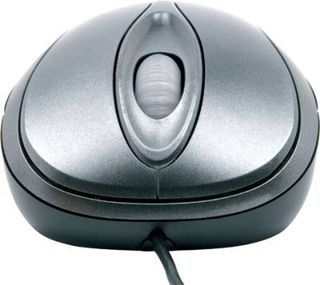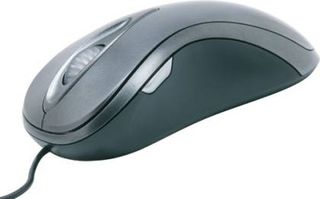The Ultimate Mouse Hunt Part Two
Back To The Future

Microsoft seems to have understood that track wheels without detents don't suit gamers. So they've gone back to the classic non-multidirectional model. Its width and the material it's made of make it a pleasure to use. Selecting weapons in FPS games goes like lightning. On the other hand, it's still astonishing that a company Microsoft's size isn't capable of developing a tilt wheel with detents, as all its smaller competitors have done. The two main buttons on each side of the mouse work just as well as the track wheel. They're wide, flexible and precise and will make both basket-case gamers and photo retouching pros happy. The two additional buttons, placed on each side of the mouse, can be assigned as you see fit and are easily accessible.

Software Side
The mouse's driver offers a few specific functions developed for gamers. For example, you can record a succession of commands as a macro and associate it with a button. That's an advantage for Real-Time Strategy games, but I'm not sure how many of you out there will use this feature. You can also program a slowdown of the mouse - the equivalent of reducing the dpi count - and also assign that to a button. So when you need to aim within a gnat's whisker in an action game, all you do is hit the button. But it's still a lot less practical than having dpi adjustable directly via a button, more or less like the Logitech devices. And on an 800-dpi mouse that really won't be able to be accelerated all that much, the advantage is debatable. The very innovative Magnifier function is really useful, but not for games. When you press the button, a blow-up of your screen appears in a frame. By holding the button down, you can adjust the zoom level and the size of the frame. This function is especially effective for photo retouching.
Stay on the Cutting Edge
Join the experts who read Tom's Hardware for the inside track on enthusiast PC tech news — and have for over 25 years. We'll send breaking news and in-depth reviews of CPUs, GPUs, AI, maker hardware and more straight to your inbox.
Current page: Back To The Future
Prev Page Microsoft Laser Mouse 6000 Next Page But Who's It Really For?Most Popular

